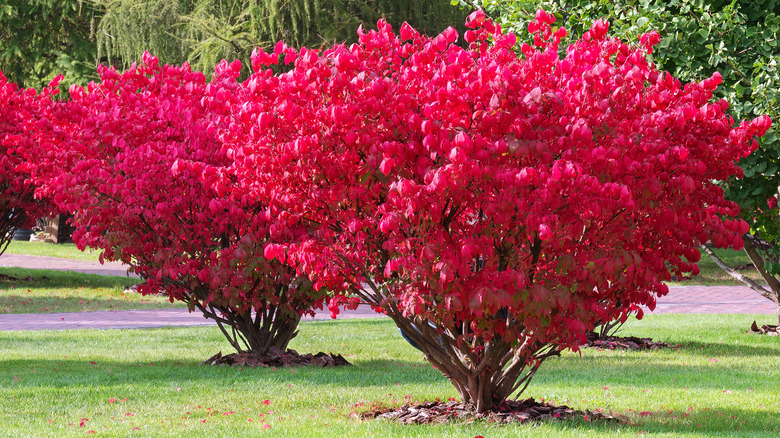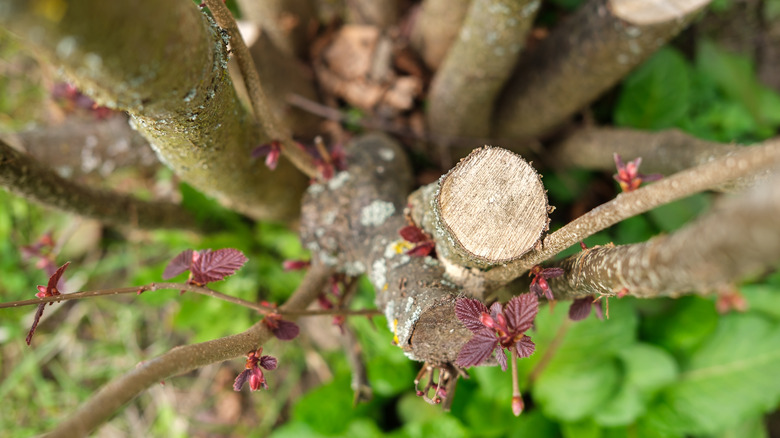Here's Why You'll Regret Planting This Gorgeous Bush In Your Yard
Nothing is worse than buying a beautiful plant from the garden center only to put it in your yard and find out later that it's actually invasive. Although most reputable nurseries sell native replacements for popular invasive ornamental plants, you can still unknowingly pick up fast-spreading hard-to-kill plants like butterfly bushes, Japanese honeysuckle, and creeping bellflower, all of which may cause you regret. What makes this all the more difficult is that the list of invasive plants keeps growing. In fact, there's a recent addition to the invasive species list that may already be in your yard — burning bush.
First introduced to North America from Asia in 1860, the burning bush (also known as a winged burning bush or winged euonymus) is a beautiful and easy-to-care-for shrub that turns a vibrant red in autumn, making it a popular landscaping centerpiece throughout the Northeast, the South, and the Midwest. However, despite its gorgeous flaming red leaves, this unique bush is quite bad for the environment and has been placed on invasive species lists due to its ability to spread quickly and out-compete native plants. In fact, wild burning bushes are now found growing in forests and prairies all over the Eastern and Midwestern United States.
Why burning bushes are bad
The biggest reason why burning bushes have such a negative impact on the environment is because they are aggressive seeders, and a single fiery red bush can produce over 1,200 seeds. In your yard, this means lots of new shoots and sprouts popping up around your bush every season. Luckily, the young sprouts can be easily taken care of by simply pulling them by hand. However, because burning bushes have the tendency to come back with a vengeance once cut, mowing over young plants without removing the root system is unlikely to kill them (unless you treat the freshly cut stems with chemical herbicide).
However, even if you are able to pull all the new sprouts every season and properly control the bush's spread within your own yard, your bush could still be damaging the local environment. This happens because the bright red berries of the burning bush attract birds which then spread the seeds inside the berries to local woodlands and prairies. Once established in the wild, burning bushes are able to outcompete native plants because they have no natural predators and grow in dense thickets that block the sun.
What to do about your burning bush
Because burning bushes were so commonly used in landscaping before they were classified as an invasive species, it is possible that you already have one in your yard. If that's the case, then you can consider whether or not you'd like to get rid of it and replace it with a native counterpart. Some good replacement plants that will add a pop of color to your yard include silky dogwood, red twig dogwood, red chokeberry, and highbush blueberry. If the vibrant color of your bush isn't as important to you as drawing wildlife with tempting berries, then shrubs like winterberry and highbush cranberry will do the trick.
But before you plant a new shrub, you'll have to take care of your old burning bush and, unfortunately, getting rid of woody shrubs always requires some work. The easiest method is to apply a foliar herbicide to the leaves of the bush when it is fruiting (from May to October). If you have the tools necessary to cut down the burning bush, then you can cut the woody stems as close to the ground as possible and then apply a herbicide (like glyphosate and triclopyr) to the freshly cut stumps.


